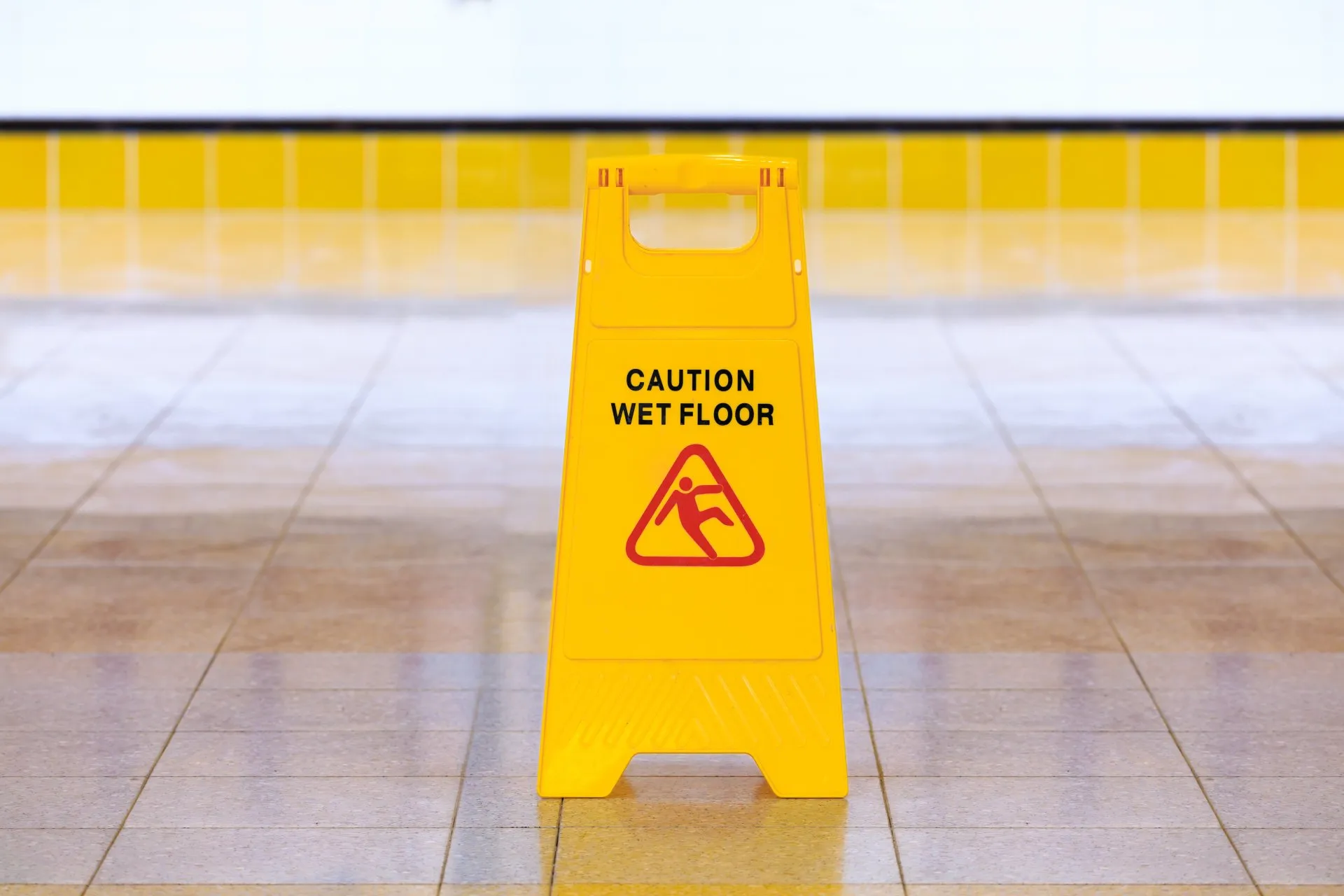
Slip and fall injuries are one of the most common (if not the most common) types of premises liability claims. Not all premises liability claims are slip and fall claims, but all slip and fall injuries are premises liability injuries.
Injuries or damages sustained as a result of unsafe spaces can entitle you to financial compensation. Business owners and property owners are expected to maintain a reasonable level of safety to prevent these types of injuries, but the true cause of your injuries is not always so cut and dry.
Premises Liability Cases
Premises liability cases are situations where you suffer an injury on someone else’s property either due to neglect or failure to remedy an unsafe condition. In a premises liability claim, the responsible party may be:
- The property owner
- Landowner
- Property manager
- Business owner
If a business is leasing space in a commercial building, and the hazard is directly related to their operations and not any defect with the property itself, the business is more likely to be liable than the actual property owner (although liability may be shared by multiple parties).
Tort Law in Premises Liability Cases
Tort law is a what makes premises liability cases possible in the state of Ohio (and every other state in the U.S.).
A tort is an action or lack of action taken that can result in injury to another party. This is considered a civil wrong and results in the liability of the at-fault party. Torts aren’t necessarily purely for personal injuries, but all personal injury cases are tort cases.
In a premise liability case, your right to safety when legally visiting someone else’s property has been compromised. This creates the potential for liability and may entitle you to compensation. Other notable examples of premises liability cases include:
- Negligent security
- Chemical exposure
- Elevator malfunction
- Dog bites
- Burns from fires or electrocutions from faulty wiring
- Construction defects (like broken banisters on stairs or compromised balconies resulting in collapses)
- Falling lights or roofing material
The most well-known premise liability case variety is a slip and fall case. Some people use the terms interchangeably and may simply say “slip and fall claims” when referring to all types of premises liability claims.
Slip and Fall Cases
Slip and fall cases are a type of premises liability case where a person is injured from falling due to unsafe conditions. There are countless ways in which someone might fall in a property. Boxes in walkways may create tripping hazards. Wet floors in aisles of a store may create slipping hazards. People can slip on ice on walkways in front of a store or trip in a pothole in a store parking lot. All of these injuries would fall into the “slip and fall” category of premises liability.
Proving negligence in a slip and fall case can be difficult. You will have to prove the hazard was a result of the owner’s negligence and the hazard was the direct cause of your injury.
There are situations where a property owner may not be considered liable for a legitimate hazard:
- The owner could not reasonably have been expected to know about the hazard
- The owner did not have a reasonable amount of time to put up warning signs, clean up or fix the hazard
- The person who was injured was inattentive and failed to avoid an obvious hazard
For example, if you drop a jar in a grocery store then immediately slip in the resulting puddle and cut yourself on broken glass, the business likely won’t be liable for your injuries. You created the hazard, and the business did not have time to fix it before your injury occurred.
The same might apply if someone dropped the jar a minute and a half before you walked down the aisle. The success or failure of that claim may be decided based on:
- What is a reasonable frequency of employee inspections of aisle condition?
- What is a reasonable amount of time between when a spill occurred and when an employee puts up a wet floor sign and mops up the spill?
- Did your injury occur before or after that interval of time elapsed?
A significant debate may occur during negotiations and litigation to determine degrees of culpability and what is and isn’t considered reasonable or appropriate from a premises safety perspective.
Ohio’s Contributory Fault Law
Contributory fault (Section 2315.33) can play a significant role in determining the damages you might be owed after a slip and fall. The law states that being partially at fault for your own injuries does not bar you from receiving damages, but your damages will be proportionally reduced by your percentage of culpability.
Both the actions of the claimant and the potentially negligent party will be considered when determining who is at fault. You might be found to have been partially at fault because you were looking at your phone instead of watching where you were walking, but the property owner might also be partially at fault because stray boxes or extension cords were in a walkway that should have been clear.
The extent to which contributory fault reduces your eventual claim payment will vary based on the unique situation.
Premises Liability Lawyers in Ohio
If you are a victim of a premises liability injury you may be entitled to compensation. Slip and fall cases can cause damages that last far beyond the incident, so don’t wait to file your claim. Our premises liability lawyers are here to help you build a case. Contact us at 1-800-411-PAIN today for a free case evaluation.
Obstetrical Malpractice and the Risk to Mothers and Babies
Understanding the Hidden Dangers in Modern Maternal Care Why Obstetrical Errors Are Still Happening Today Most expecting parents trust their medical teams completely. They assume that prenatal appointments, labor monitoring,
Can You Sue for Injuries During Pregnancy or Labor?
What Expectant Mothers Should Know About Medical Negligence How Pregnancy and Labor Injuries Typically Occur Pregnancy and childbirth dramatically change a mother’s body, and complications can arise even in low-risk
When Numbness Turns Into a Lifetime Injury
Understanding Nerve Damage Caused by Medical Negligence How a Simple Procedure Can Lead to Permanent Damage A routine medical procedure should never leave a patient with debilitating complications. Unfortunately, many
Nerve Injury After Medical Procedures—What You Should Know
When Numbness Turns Into a Lifetime Injury Why Post-Procedure Nerve Damage Deserves Immediate Attention A nerve injury after a medical procedure is far more than an uncomfortable side effect—it can
Injured as a Passenger on a Motorcycle—What Are Your Rights?
Passengers Have Strong Legal Protections Under Ohio Law Many people believe motorcycle passengers have limited legal options after a crash—but that’s completely false. In Ohio, injured motorcycle passengers almost always
Understanding Liability in Multi-Vehicle Motorcycle Wrecks
Why Multi-Vehicle Motorcycle Crashes Are So Complex When a motorcycle is involved in a crash with multiple vehicles, determining who is responsible becomes significantly more complicated. Unlike two-car collisions—where fault
Legal Recourse for Injuries Caused by Prescription Errors
When Medication Mistakes Start Outside the Hospital Prescription errors don’t just happen in hospitals. They can occur in doctors’ offices, pharmacies, clinics, long-term care facilities, or anywhere medications are ordered
How Dosage Errors and Allergic Reactions Happen in Hospitals
When Medication Mistakes Put Patients in Danger Hospitals are supposed to be safe, controlled environments where medications are administered accurately and monitored closely. But even in well-staffed medical facilities, medication
Lab Mistakes That Lead to Delayed or Wrongful Treatment
When Faulty Testing Puts Your Health at Risk Lab tests are meant to provide clarity, but when errors occur, they can send doctors and patients down the wrong path. A
Can You Sue for a Misdiagnosis Caused by Lab Negligence?
When Lab Errors Lead to Life-Changing Consequences Laboratories play a crucial role in modern healthcare. Doctors rely on lab results to diagnose illnesses, determine treatment plans, and make fast decisions
